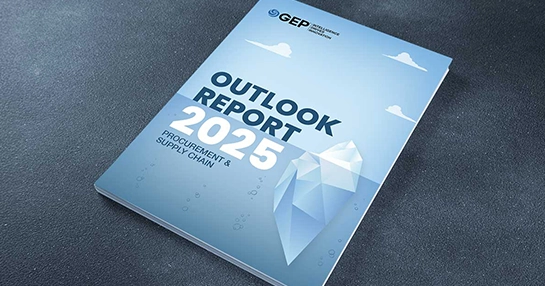
Plan to Enhance Procurement Savings? Start with Vendor Data Validation
- Clean vendor data is the foundation for savings, compliance, and risk control.
- A structured vendor validation process prevents fraud, duplicate payments, and the inclusion of unreliable suppliers.
- Modern procurement platforms automate validation, turning messy data into real negotiation power.
September 29, 2025 | Supply Chain Strategy 4 minutes read
Every procurement team loves to talk about strategy: category management, contract negotiations, supplier collaboration, digital transformation. But here’s the catch: none of it holds up if your vendor data is messy. Incomplete, inconsistent, or duplicated records can derail even the smartest strategy.
That’s why vendor data management deserves more attention. It may not feel flashy, but it is the quiet engine behind savings, compliance, and resilience. Clean vendor data gives you negotiation power. Real-time validation protects you from fraud. Predictive insights help you get ahead of risks instead of scrambling after the fact.
The truth is simple: without validated vendor data, procurement leaders are building on quicksand. This blog breaks down what vendor validation really is, why it matters, the steps involved, and how smart organizations are making it work.
Ready to turn vendor data into a real source of savings and resilience?
Explore how GEP can help.
Understanding Vendor Validation
At its core, vendor validation is about confirming that a supplier is who they say they are; and that they are capable of delivering.
It starts with checking the basics: tax IDs, incorporation papers, licenses, bank details, and certifications. But it goes further. It looks at financial stability, compliance with regulations, and capacity to meet commitments.
Think of vendor validation as a way to keep risk in check and efficiency high. Skip it, and you risk duplicate entries, fraudulent vendors, or suppliers that collapse mid-contract. Do it right, and you know the supplier master file you rely on is accurate and trustworthy.
Today, leading procurement platforms handle much of this automatically. They consolidate vendor records across systems, validate details against trusted databases, and flag anomalies in real time. What used to take weeks of back-and-forth can now be done almost instantly.
The Importance of Vendor Data Validation for a Business
Getting vendor data validation right is not about keeping files tidy. It is about giving procurement tools to perform better.
Diversity reporting needs
If your supplier data is messy, there is no way to credibly report on supplier diversity or ESG goals. Validated data makes it possible to identify women-owned, minority-owned, or sustainability-certified suppliers. Boards, regulators, and investors expect transparency, and only clean data delivers it.
Competitive advantage
Messy vendor files hide spend. A supplier might appear under three different names, splitting what should be a $9 million relationship into three $3 million ones. That robs you of leverage. With vendor master data management, you see the true picture and negotiate from a position of strength.
Increased efficiency; decreased costs
Bad data is expensive. Duplicate payments slip through. Onboarding drags out. Invoices stall in approvals. A solid validation process fixes this. Clean vendor data reduces rework, lowers fraud risk, and speeds up AP processing. That translates directly into lower costs and smoother operations.
Ready to leverage agentic AI in procurement?
Download The Agentic AI Playbook to see how leaders are moving from automation to autonomy.
The Vendor Validation Process
Validation is not a one-off clean-up. It is a repeatable process that creates a reliable supplier base. Here’s how it usually works:
Documentation Review
Confirm tax IDs, incorporation papers, licenses, and banking details. This ensures suppliers are legally established and properly registered.
Reference Checking
Talk to past clients or industry peers. References reveal whether suppliers deliver on their promises, something paperwork alone cannot guarantee.
Site Visits
Seeing operations firsthand is often the best way to validate capacity and compliance. Site visits help confirm production scale, safety standards, and labor practices — especially important for high-risk suppliers.
Audits and Assessments
Audits dig deeper into financial health, governance, and data privacy policies. Assessments may also cover environmental sustainability, cybersecurity, or human rights practices. Together, they give a rounded view of supplier reliability.
Certification Verification
Suppliers often claim ISO standards, ESG credentials, or diversity ownership. Verifying these certifications prevents inflated claims and protects against compliance or reputational risks.
Smart procurement solutions digitize much of this. Supplier portals capture details directly, automated checks flag inconsistencies, and integrations cross-verify certifications against official databases. That means fewer manual errors and faster, more reliable outcomes.
Start Validating Vendor Data
Vendor data management may not get the spotlight, but it quietly drives procurement performance. Without validated data, organizations face duplicate payments, fraud, regulatory penalties, and lost savings. With validated data, they gain efficiency, compliance, and credibility.
The importance of vendor data validation is simple: it creates visibility, strengthens decision-making, and unlocks both trust and savings. For procurement leaders, the real question is not if validation matters, but how quickly to embed it into everyday processes.
Leading procurement solutions have shown that when vendor validation is treated as a strategic priority, it pays off in cleaner spend data, stronger supplier relationships, and greater resilience.
Invest in vendor validation now, and you set up your procurement strategies on solid foundations for the future.
FAQs
By verifying ownership and certification data, procurement teams can accurately identify and track diverse suppliers. This ensures transparency and helps meet board, investor, and regulatory expectations. Modern supplier management platforms build this capability into workflows, giving leaders confidence in their reporting.
Absolutely. Validation removes duplicate records, prevents fake accounts, and cross-checks supplier information with trusted sources. This reduces fraud and ensures payments go to the right entities. Automation takes it further by running these checks in real time, making fraud prevention part of the process rather than an afterthought.
Ready to turn vendor data into a reliable source of savings and resilience? Explore how leading procurement solutions can help.



